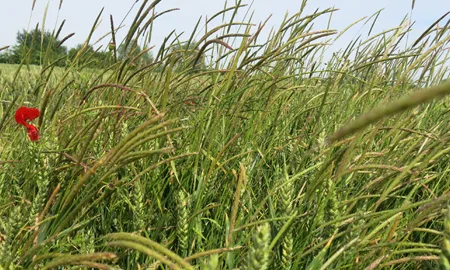Published on 31st May 2018
Weed Management
Crop rotation choices for black-grass management: What you need to know

Planning your crop rotations to help manage black-grass? This article provides some helpful guidance on which crops to consider and why.
Crop rotation choices for black-grass management:
When deciding which rotation to help with black-grass control, various factors should be considered including regulatory, financial and yield implications.
Some crops will see higher yields when following another crop type. For example, wheat grown after peas or beans might typically expect a higher yield than after oilseed rape, thanks to nitrogen fixation.
Crops such as spring barley are highly competitive against black-grass, but an increased seed rate is encouraged for greater biomass to increase competition for light and nutrients. Denser crops such as spring oats are also valuable because black-grass will struggle to establish.
In cases where soil might not be in a suitable condition for spring drilling, cover crops can be included in the rotation to allow spring crop establishment by removing water and creating a better tilth.
Crops that need to be planted early in order to gain higher biomass for early lifting, such as sugar beet, can allow black-grass to thrive because a majority of spring germinating black-grass plants will germinate during this time.
Growing a diverse range of crops and choosing more competitive varieties will broaden the amount of different herbicide types which can be used, which will help to prevent resistance developing, and allow longer-term use of effective herbicides.
In the very worst cases of black-grass, planting grass leys or fallowing a field for several years may be necessary. With the black-grass seed bank naturally declining by up to 80% per year, this can be an effective way to tackle the weed.
Sticking to the same rotations year-on-year – with early-drilled winter crops and repeat applications of the same herbicide type – will promote the development of resistance, and black-grass can take over.
By growing a diverse range of crops, using other cultural controls and a robust herbicide programme both pre- and post-drilling as appropriate, you are one step closer to having a significant impact on grass weeds.
Watch a panel of leading experts talk about the best rotation below

If you have any questions, please contact your local CTM or Tweet @Bayer4CropsUK.


